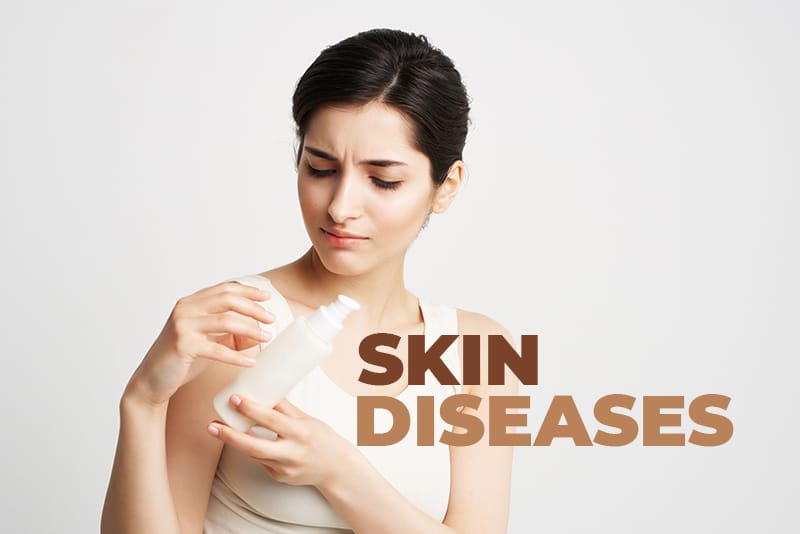Skin diseases or disorders refer to conditions that affect the skin. These include all conditions that tend to clog, irritate or inflame the skin. Temporary or permanent, these conditions may cause rashes, inflammation, itchiness or other changes that may affect the skin’s overall appearance. Certain skin conditions may be genetic while lifestyle factors cause others. Treatment for skin conditions may include a combination of medications or lifestyle changes. Dermatologists treating a wide range of complex skin conditions may face challenges when it comes to medical billing and coding. There are difficulties associated with reporting diagnoses such as the specificity and granularity of ICD-10 codes. Relying on the services of a medical coding company that specializes in dermatology medical billing services can ensure error-free, timely claim submission.
Common Skin Conditions and Their Related ICD-10 Codes
Here discussed are some common skin conditions and their related ICD-10 codes –
Atopic Dermatitis (Eczema) – One of the most common forms of eczema seen in children, atopic dermatitis (AD) is characterized by itchy and red skin. Reports suggest that about 18 million American adults have atopic dermatitis (AD). The exact causes of the condition are not known. Symptoms of AD include – dry, itchy skin and red rashes that come and go. The rashes commonly appear on the face, cheeks, scalp, arms and legs. However, it can also occur on the wrists, ankles, eyelids, front side of the neck and bend side of the elbows and knees. ICD-10-CM codes of AD include –
- L20 – Atopic dermatitis
- L20.0 – Besnier’s prurigo
- L20.8 – Other atopic dermatitis
- L20.81 – Atopic neurodermatitis
- L20.82 – Flexural eczema
- L20.83 – Infantile (acute) (chronic) eczema
- L20.84 – Intrinsic (allergic) eczema
- L20.89 – Other atopic dermatitis
- L20.9 – Atopic dermatitis, unspecified
Acne (Acne vulgaris) – A common skin disorder in the United States, acne occurs due to blocked hair follicles and oil (sebaceous) glands of the skin, that is often triggered by hormonal imbalances. The skin disorder can affect people with any skin type and appear in the form of pimples, whiteheads, blackheads, or painful nodules and cysts. Symptoms of this condition commonly appear on the face, neck, shoulders, chest, and upper back. If left untreated, acne can leave scars or dark spots on the skin. ICD-10 codes for Acne include –
- L70 – Acne
- L70.0 – Acne vulgaris
- L70.1 – Acne conglobata
- L70.2 – Acne varioliformis
- L70.3 – Acne tropica
- L70.4 – Infantile acne
- L70.5 – Acné excoriée
- L70.8 – Other acne
- L70.9 – Acne, unspecified
Rosacea – A common skin condition, rosacea causes blushing or flushing and visible blood vessels in the face. It may also produce small, pus-filled bumps. The exact cause of rosacea is unknown but could be due to a combination of factors such as an overactive immune system, or heredity and environmental factors. In certain cases, rosacea may flare up for weeks to months and then go away for a while. Treatment includes prescribed medications (applied to the skin) and oral drugs (swallowing pills, tablets, or capsules) to control the symptoms. Related ICD-10 codes include –
- L71 – Rosacea
- L71.0 – Perioral dermatitis
- L71.1 – Rhinophyma
- L71.8 – Other rosacea
- L71.9 – Rosacea, unspecified
Actinic Keratosis – Also known as a solar keratosis, the condition causes a rough, scaly patch on the skin that develops from years of sun exposure. The scaly patches grow slowly and usually first appear on the face, lips, ears, forearms, scalp, neck or back of the hands. It is estimated that the condition is more common among people above the age of 40 years. If left untreated, it causes or increases the risk of skin cancer called squamous cell carcinoma. ICD-10 codes for the condition include –
- L57.0 Actinic keratosis
Hives – Also known as urticaria, hives cause itchy, raised welts (that are usually red, pink, or flesh-colored) on the skin. Swellings, (known as wheals), appear as rashes on the skin. In most cases, hives occur due to allergic reaction to a medication or food or as a reaction to an irritant in the environment. The condition can be either temporary or at times chronic. Treatment includes non-sedating antihistamines (which help block or reduce the body’s allergic response). In chronic cases, patients may be prescribed corticosteroids or stronger drugs. ICD-10 codes include-
- L50 – Urticaria
- L50.0 – Allergic urticaria
- L50.1 – Idiopathic urticaria
- L50.2 – Urticaria rashes due to cold and heat
- L50.3 – Dermatographic urticaria
- L50.4 – Vibratory urticaria
- L50.5 – Cholinergic urticaria
- L50.6 – Contact urticaria
- L50.8 – Other urticaria
- L50.9 – Urticaria, unspecified
Shingles (Herpes Zoster) – Regarded as a viral infection, shingles (herpes zoster) results in an outbreak of a painful rash or blisters on the skin. The condition is caused by the varicella-zoster virus. Reports suggest that about 1 million cases of shingles are diagnosed every year in the United States. It most often appears as a band of rashes or blisters in one area of the body. The risk of shingles increases as people get older, with about half the cases occurring in people over the age of 50. ICD-10 codes include –
- B02 Zoster [herpes zoster]
- B02.0 Zoster encephalitis
- B02.1 Zoster meningitis
- B02.2 Zoster with other nervous system involvement
- B02.21 Postherpetic geniculate ganglionitis
- B02.22 Postherpetic trigeminal neuralgia
- B02.23 Postherpetic polyneuropathy
- B02.24 Postherpetic myelitis
- B02.29 Other postherpetic nervous system involvement
- B02.3 Zoster ocular disease
- B02.30 … … unspecified
- B02.31 Zoster conjunctivitis
- B02.32 Zoster iridocyclitis
- B02.33 Zoster keratitis
- B02.34 Zoster scleritis
- B02.39 Other herpes zoster eye disease
- B02.7 Disseminated zoster
- B02.8 Zoster with other complications
- B02.9 Zoster without complications
Having the correct knowledge about the different skin conditions and their treatment options, incorporating certain lifestyle changes and following home remedies can help prevent the risks of these skin conditions. Billing and coding for inflammatory skin conditions can be complex. Healthcare providers need to be familiar with the highly specific ICD-10 codes to report common skin problems. By outsourcing these tasks to established medical billing companies (that provide the services of AAPC-certified coding specialists), healthcare practices can ensure correct and timely medical billing and claims submission.




